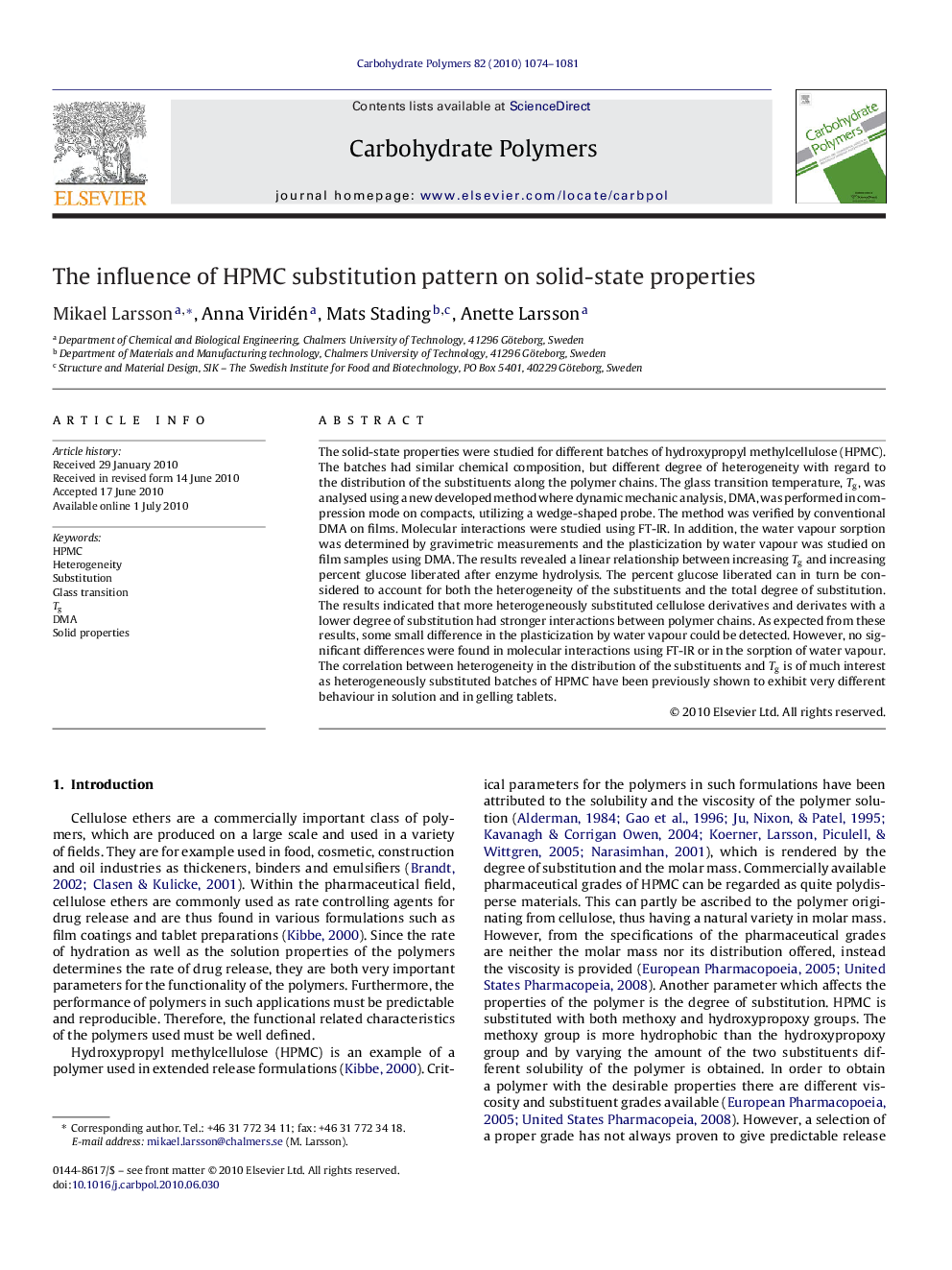| Article ID | Journal | Published Year | Pages | File Type |
|---|---|---|---|---|
| 1383902 | Carbohydrate Polymers | 2010 | 8 Pages |
The solid-state properties were studied for different batches of hydroxypropyl methylcellulose (HPMC). The batches had similar chemical composition, but different degree of heterogeneity with regard to the distribution of the substituents along the polymer chains. The glass transition temperature, Tg, was analysed using a new developed method where dynamic mechanic analysis, DMA, was performed in compression mode on compacts, utilizing a wedge-shaped probe. The method was verified by conventional DMA on films. Molecular interactions were studied using FT-IR. In addition, the water vapour sorption was determined by gravimetric measurements and the plasticization by water vapour was studied on film samples using DMA. The results revealed a linear relationship between increasing Tg and increasing percent glucose liberated after enzyme hydrolysis. The percent glucose liberated can in turn be considered to account for both the heterogeneity of the substituents and the total degree of substitution. The results indicated that more heterogeneously substituted cellulose derivatives and derivates with a lower degree of substitution had stronger interactions between polymer chains. As expected from these results, some small difference in the plasticization by water vapour could be detected. However, no significant differences were found in molecular interactions using FT-IR or in the sorption of water vapour. The correlation between heterogeneity in the distribution of the substituents and Tg is of much interest as heterogeneously substituted batches of HPMC have been previously shown to exhibit very different behaviour in solution and in gelling tablets.
